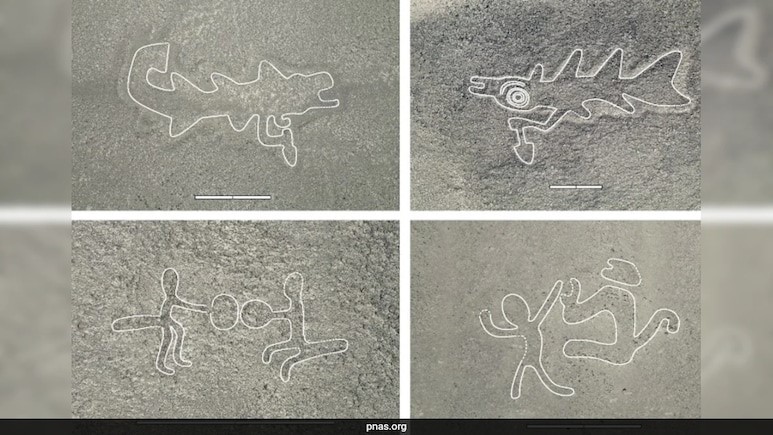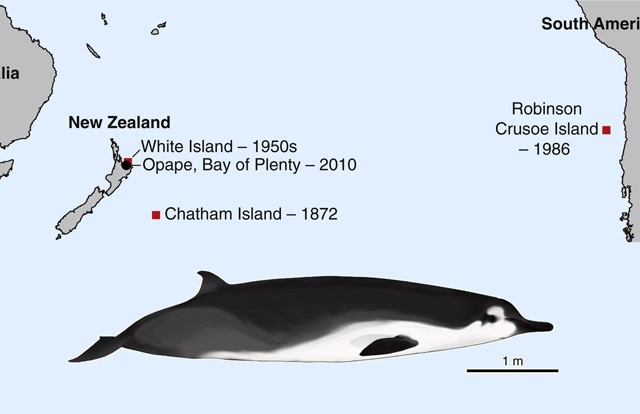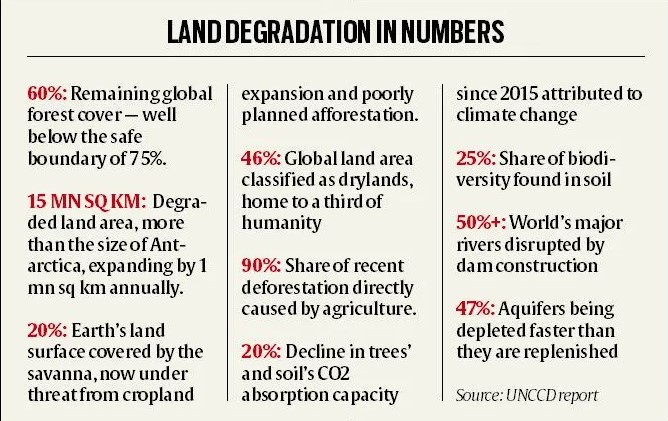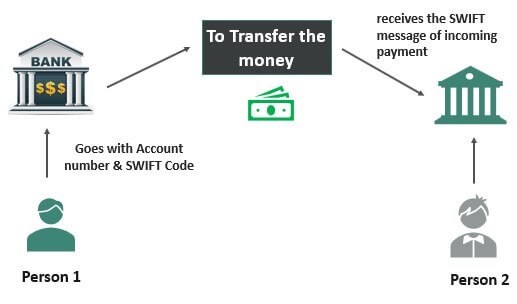Varkala cliff
The National Green Tribunal (NGT) recently sought a reply from the Geological Survey of India (GSI) and others regarding the declining state of Varkala cliff in Kerala.
- Varkala cliff is located in the varkala, a coastal town in Thiruvananthapuram, Kerala.
- It rising from the shoreline of Varkala Papanasam beach.
- It formed during the Tertiary Period (around 2.58 million years ago), is divided into 3 sections –the North, South and Edava cliffs.
- It elevated up to 80 feet above the sea level and made of high red laterite soil.
- The cliff isn't made of hard, consolidated rocks and its basement rock is around 40 m under the form.
- It stands out as the only region in southern Kerala where cliffs line the Arabian Sea.
- It is known as the North Cliff and Warkallai formation.
- Its unique Cenozoic sedimentary formation have designated them as a national geological monument.
- In 2015, the Ministry of Mines and the Geological Survey of India declared the Varkala Cliffs a geo-heritage site.
A geo-heritage site is a location with geological, geomorphological, paleontological, or stratigraphic significance.
- The process to make it a UNESCO World Heritage Site Geo Park is also in progress.
- Evidence of Mio-Pliocene Age - It is the only place where sediments of the Mio-Pliocene Age have been founded.
References
- The Hindu| Varkala cliff
- Times of India| Varkala cliff
- Kerala| Varkala cliff
Nazca geoglyphs
Recently, the Artificial Intelligence (AI) has newly discovered mysterious Nazca geoglyphs in Peru resembles killer whales with knives, cats, camels, and even in the shape of the Pixar robot character Wall-E.
- Nazca Lines – It is a group of large human-carved lines located in Peru's Nazca Desert.
- These ancient artworks were created between 200 B.C. and 500 A.D. by the members of the Pre-Incan Civilisation, known as the Nazca.
- They remove the upper layers of the desert's red-tinged surface pebbles to reveal sections of lighter soil in a wide range of different shapes and sizes.
- The lines are found in a region of Peru just over 200 miles southeast of Lima, near the modern town of Nasca.
- In total, there are over 800 straight lines, 300 geometric figures and 70 animal and plant designs, also called biomorphs.
- Some of the straight lines run up to 30 miles, while the biomorphs range from 50 to 1200 feet in length.
- These lines are known as Geoglyphs.
The Nazca Lines were discovered first by the Peruvian archaeologist Toribio Mejia Xesspe in 1926.
- Geoglyphs - They are motifs created on the ground by manipulating surface stones, soil, or gravel.
- It is a drawings made by removing rocks and earth to create a “negative” image.
- Due to lack of rainfall, these designs are escaped from erosion and survived for thousands of years.
- Forms - It looks like a trapezoids, spirals, and zigzags to stylised figures of hummingbirds, spiders.
- The Nazca Lines are a UNESCO World Heritage site along with the Lines and Geoglyphs of Palpa.

References
- The Indian Express| Nazca geoglyphs
- NDTV|Nazca geoglyphs
Spade-toothed whale
Recently, the Scientists gathered to decode the Spade-toothed whale’s mystery discovered at the mouth of the Taiari River in New Zealand.
- It is the world’s rarest species of beaked whale.
- Scientific name - Mesoplodon traversii.
- It has never been seen alive at sea.
- New Zealand’s Indigenous tribal people local Maori iwi consider this whale as a Taonga, a sacred treasure.
- Pacific Indigenous leaders signed a treaty recognizing whales as Legal Persons, but such a declaration is not reflected in the laws of participating nations.
- Discovery – The first spade-toothed whale bones were found in 1872 on New Zealand’s Pitt Island.

- Appearance – Nothing is known about their external appearance, but it known from their skeletal remains.
- It thought to be a medium sized beaked whale, with the adult male possessing 2 large tusks that erupt half-way along the lower jaw and curl up and over the beak.
- Size - 5.0 - 5.5 m (16 - 18 ft) in length.
- Habitat - They're believed to be deep-diving creatures that don't spend much time on the ocean surface.
- Distribution - Specimens were found in New Zealand and Chile.
- It thought to live in the South Pacific Ocean or Southern Hemisphere.
- Diet - Feed primarily on squid, fish, and different species of crustaceans.
- Population - The total population size is unknown.
- Conservation Status - IUCN - Data Deficient.
- Threats – They may suffer from
- Noise pollution
- Climate Change
- Bycatch
- Plastic
- Similar Species - Strap-Toothed beaked whale.
References
- The Hindu| Spade-toothed whale
- Animalia| Spade-toothed whale
- WDC| Spade-toothed whale
Land Degradation
Recently, the United Nations Convention to Combat Desertification (UNCCD) published a report that Land degradation is undermining Earth’s capacity in the COP16 summit, Riyadh, Saudi Arabia.
- Land Degradation - It is the reduction in the capability of the land to produce benefits from a particular land use under a specified form of land management.
- It is a negative trend in land condition, caused by direct or indirect human-induced processes including anthropogenic climate change.
- It expressed as a long-term reduction or loss of biological productivity, ecological integrity or value to humans.
- Causes
- Unsustainable land management practices
- Deforestation
- Urbanization
- Overgrazing
- Inappropriate irrigation
- Excessive use of agrochemicals
- Pollution
- Mining and quarrying
The global area impacted by land degradation approximately 15 million km², more than the entire continent of Antarctica or nearly the size of Russia, is expanding each year by about a million square km.

- Impacts – It raises the risk of malnutrition by reducing the quality and quantity of food production.
- It contributes to the spread of water- and food-borne diseases that result from poor hygiene and scarcity of clean water.
- It can cause respiratory diseases due to soil erosion.
- It hit low-income countries because they have less resilience and concentrated in tropical and arid regions.
- Marine and freshwater systems also suffer due to land degradation.
- The world’s soil is the largest terrestrial carbon sink. When land is degraded, soil carbon can be released into the atmosphere, along with nitrous oxide. This can further exacerbate global warming.
Land Degradation hotspots in dry regions such as South Asia, northern China, the High Plains and California in the United States, and the Mediterranean.
|
United Nations Convention to Combat Desertification (UNCCD)
|
- It is the only legally binding framework set up to address desertification and the effects of drought.
- Established in – 1994.
- Member Countries – 197 Parties to the Convention, including 196 country Parties and the European Union.
- Principles - Participation, Partnership and Decentralization.
- It is a multilateral commitment to mitigate the impact of land degradation, and to protect the land.
- The United Nations Convention to Combat Desertification (UNCCD) has a goal of land degradation neutrality (LDN), which aims to halt and reverse land degradation.
- LDN is based on the concept of reducing, avoiding, and reversing degradation from a baseline year of 2015.
|
References
- The Indian Express| Land Degradation
- UNCCD| Global Crisis of Land Degradation
- UNDRR| Land Degradation
Society for Worldwide Interbank Financial Telecommunication (SWIFT)
Society for Worldwide Interbank Financial Telecommunication (SWIFT) serves as a pivotal network for international financial transactions for countries around the world including India.
- SWIFT is a global member-owned cooperative that functions as a huge messaging system for international funds transfer.
- The world’s leading provider of secure financial messaging services.
- Founded in - 3 May 1973 by 239 banks from 15 countries.
- Headquartered in – Belgium.
- It provides safe and secure financial transactions for its members.
- Initially, SWIFT founders designed the network to facilitate communication about Treasury and correspondent transactions only.
- SWIFT is the largest and most streamlined method for international payments and settlements.
- This payment network allows individuals and businesses to take electronic or card payments even if the customer or vendor uses a different bank than the payee.
- It works by assigning each member institution a unique ID code (a BIC number) that identifies the bank name and the country, city, and branch.
- It has been used to impose economic sanctions on Iran, Russia, and Belarus.
- SWIFT is overseen by the Group of Ten countries' G-10 central banks which includes,
- Belgium, Canada, France, Germany, Italy, Japan, Netherlands, United Kingdom, United States, Switzerland, and Sweden.
- The European country of Belgium acts as the lead overseer alongside other members such as the U.S. Federal Reserve.
- Before SWIFT, Telex was the only available means of message confirmation for international funds transfer.
Telex is an international message-transfer service that allowed users to send and receive text messages over a network of teleprinters.
|
SWIFT
|
SWIFTNet
|
|
It is a cooperative of banks which guarantees the security of financial transactions.
|
It is the private global network for banking communication created by banks and managed by SWIFT.
|
- Features – It’s messaging system sets up the transfer of money between member banks and other member financial institutions.
- Through which banks send information about transactions.
- The banks themselves carry out their transactions.
- Uses – It is used by banks, financial institutions, foreign exchanges, asset-management companies, and even some non-financial institutions.

- Swift Oversight Forum - It was established on 2012, and joined by other countries central banks from
- Australia, China, Hong Kong, India, Korea, Russia, Saudi Arabia, Singapore, South Africa, and Turkey.
|
Swift India Domestic Services
|
- It is a member-owned cooperative created by the Indian community.
- Launched on - 18 March 2014, Mumbai.
- It includes partners of leading public and private banks.
- It is fully committed to serving and addressing domestic market needs.
- It offers deep expertise and experience in international standards and best practices.
- It is known as Swift India.
|
References
- The Indian Express| SWIFT
- SWIFT| History and Swift India
- Remote| Features, Codes and Uses of SWIFT



